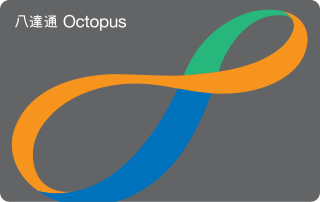
The Octopus card is a reusable contactless stored value smart card for making electronic payments in online or offline systems in Hong Kong. Launched in September 1997 to collect fares for the territory's mass transit system, it has grown into a widely used system for transport and other retail transactions in Hong Kong. It is also used for purposes such as recording school attendance and permitting building access. The cards are used by 98 percent of the population of Hong Kong aged 15 to 64 and the system handles more than 15 million transactions, worth over HK$220 million, every day.
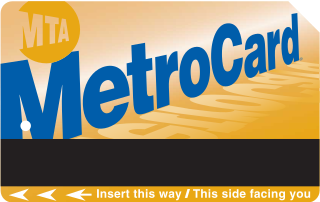
The MetroCard is a magnetic stripe card used for fare payment on transportation in the New York City area. It is a payment method for the New York City Subway, New York City Transit buses and MTA buses. The MetroCard is also accepted by several partner agencies: Nassau Inter-County Express (NICE), the PATH train system, the Roosevelt Island Tramway, AirTrain JFK, and Westchester County's Bee-Line Bus System.
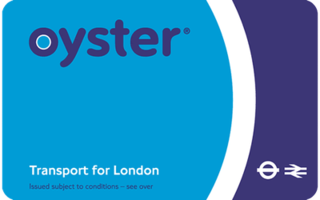
The Oyster card is a payment method for public transport in London, England, United Kingdom. A standard Oyster card is a blue credit-card-sized stored-value contactless smart card. It is promoted by Transport for London (TfL) and can be used on as part of London's integrated transport network on travel modes including London Buses, London Underground, the Docklands Light Railway (DLR), London Overground, Tramlink, some river boat services, and most National Rail services within the London fare zones. Since its introduction in June 2003, more than 86 million cards have been used.

SmarTrip is a contactless stored-value smart card payment system managed by the Washington Metropolitan Area Transit Authority (WMATA). The Maryland Transit Administration (MTA) uses a compatible payment system called CharmCard. A reciprocity agreement between the MTA and WMATA allows either card to be used for travel on any of the participating transit systems in the Baltimore-Washington metropolitan area. Unlike traditional paper farecards or bus passes, SmarTrip/CharmCard is designed to be permanent and reloadable; the term "SmarTrip" may refer to both payment systems unless otherwise noted.
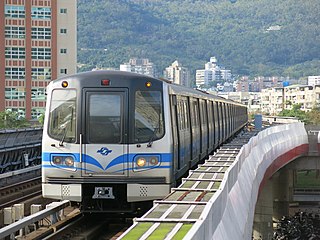
Taipei Metro is a rapid transit system operated by the Taipei Rapid Transit Corporation serving the capital Taipei and New Taipei City in Taiwan.
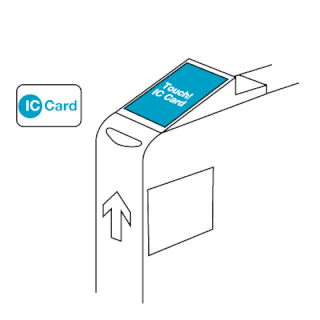
The EZ-Link card is a rechargeable contactless smart card and electronic money system that is primarily used as a payment method for public transport such as bus and rail lines in Singapore. A standard EZ-Link card is a credit-card-sized stored-value contact-less smart-card that comes in a variety of colours, as well as limited edition designs. It is sold by SimplyGo Pte Ltd, a merged entity of TransitLink and EZ-Link since 2024, a subsidiary of the Land Transport Authority (LTA), and can be used on travel modes across Singapore, including the Mass Rapid Transit (MRT), the Light Rail Transit (LRT), public buses which are operated by SBS Transit, SMRT Buses, Tower Transit Singapore and Go-Ahead Singapore, as well as the Sentosa Express.
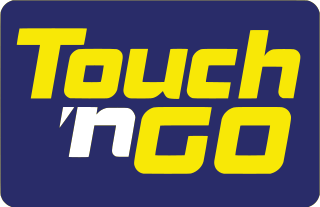
Touch 'n Go is a contactless smart card system used for electronic payments in Malaysia. The system was introduced in 1997 and is widely used for toll payments on highways, public transportation, parking, and other services. The card is equipped with a radio-frequency identification (RFID) chip that allows users to make payments by simply tapping the card on a reader device. Touch 'n Go cards can be reloaded with funds either online or at designated reload kiosks. The system has become a popular and convenient way for Malaysians to make cashless transactions.

Taiwan Taoyuan International Airport MRT, commonly known as the Airport MRT, is a rapid transit line of the Taoyuan Metro that connects the municipalities of the capital Taipei, Taoyuan and New Taipei with Taoyuan International Airport. The 51.33 km (31.89 mi) line, from Taipei Main Station to Laojie River, has 22 stations and began commercial service on 2 March 2017.
SmartRider is the contactless electronic ticketing system of the Public Transport Authority of Western Australia. The system uses RFID smartcard technology to process public transport fares across public bus, train, and ferry services.
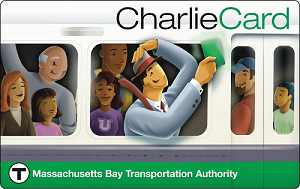
The CharlieCard is a contactless smart card used for fare payment for transportation in the Boston area. It is the primary payment method for the Massachusetts Bay Transportation Authority (MBTA) and several regional public transport systems in the U.S. state of Massachusetts. It is used on the MBTA's subway and bus services, but is not currently accepted on the MBTA Commuter Rail and ferries.

The Shanghai Public Transportation Card (SPTC) is a contactless card, utilising RFID technology, which can be used to access many forms of public transport and related services in and around Shanghai. Shanghai public transportation card is also provided in the form of Apple Pay as well as QR codes, which are accessible through WeChat, Alipay, APPs and miniprograms, and enjoy the same price discounts as cards.

The Maokong Gondola is a gondola lift transportation system in Taipei, Taiwan. Opened on 4 July 2007, the Maokong Gondola operates between Taipei Zoo and Maokong. The 4.3 km (2.7 mi) line has four passenger stations. The facilities of the gondola were contracted to the French company Poma.

The Taipei Joint Bus System is a bus system that serves the greater metropolitan area of Taipei, Taiwan. It is administered by the Taipei Joint Bus Service Management Center, the Taipei City Traffic Bureau, and the New Taipei City Traffic Bureau, and is operated by 15 private agencies. It includes the bus systems of Taipei City and New Taipei City, and has a coordinated numbering and fare system.

The Transit Access Pass (TAP) is a contactless smart card used for automated fare collection on most public transport agencies within Los Angeles County, California. The card is also available in electronic form, free of charge, in Apple Wallet, thereby bypassing the need to purchase the plastic USD $2 card. It is administered by the Los Angeles County Metropolitan Transportation Authority (Metro), and the card and fare collection systems are manufactured by Cubic Transportation Systems.
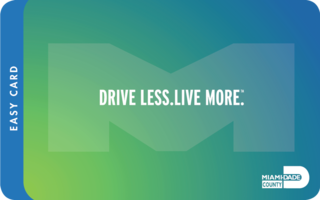
The Easy Card is a contactless smartcard system for public transit fares in the Miami metropolitan area. The Easy Card is valid on Metrobus and Metrorail services in Miami-Dade County, and on Tri-Rail services throughout the region. Easy Card payments were introduced in 2009 on Miami-Dade Transit services, and expanded to Tri-Rail in 2011. The card functions as a stored-value card, and can also be loaded with unlimited-ride passes. Reduced-fare and zero-fare versions of the Easy Card are available for eligible customers, including seniors and individuals with disabilities.

MetroCARD is a contactless smartcard ticketing system for public transport services in the Adelaide city and suburbs in South Australia. The system is managed by Adelaide Metro and is usable on their bus, train and tram services.

More Card is a rechargeable smart card for paying transportation fares in public transport systems in India. Tipped as a nationwide interoperable transport card, the card aims to be a single point of transaction, applicable in state buses, Metro and even parking. The card was launched in 2012 in Delhi, initially acting as a common card for the Delhi Metro and its feeder buses.
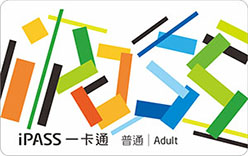
iPASS is a contactless smart card operated by the iPASS Corporation. Starting from February 13, 2017, both EasyCard and iPASS are accepted for virtually all public transport in Taiwan, including rapid transit, buses, and Taiwan Railway services. It also serves as an electronic wallet.

Beep is a reloadable contactless smart card created in 2015 to be a replacement for the magnetic card-based system in paying rail-based rapid transit transportation fares in and around Metro Manila. Beep is also used in lieu of cash in some convenience stores and other businesses. The Beep system is implemented and operated by AF Payments Incorporated, which is primarily owned by Ayala Corporation and Metro Pacific Investments Corporation.

National Common Mobility Card (NCMC) is an open-loop, inter-operable transport card conceived by the Ministry of Housing and Urban Affairs under Prime Minister Narendra Modi's ‘One Nation, One Card' vision. It was launched on 4 March 2019. The transport card enables the user to pay for travel, toll tax, retail shopping and withdraw money.





















